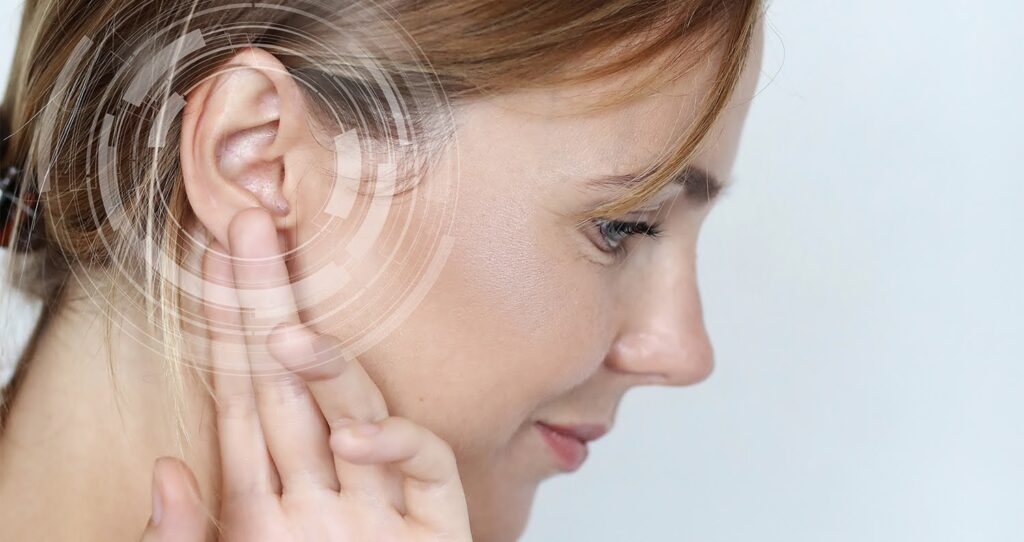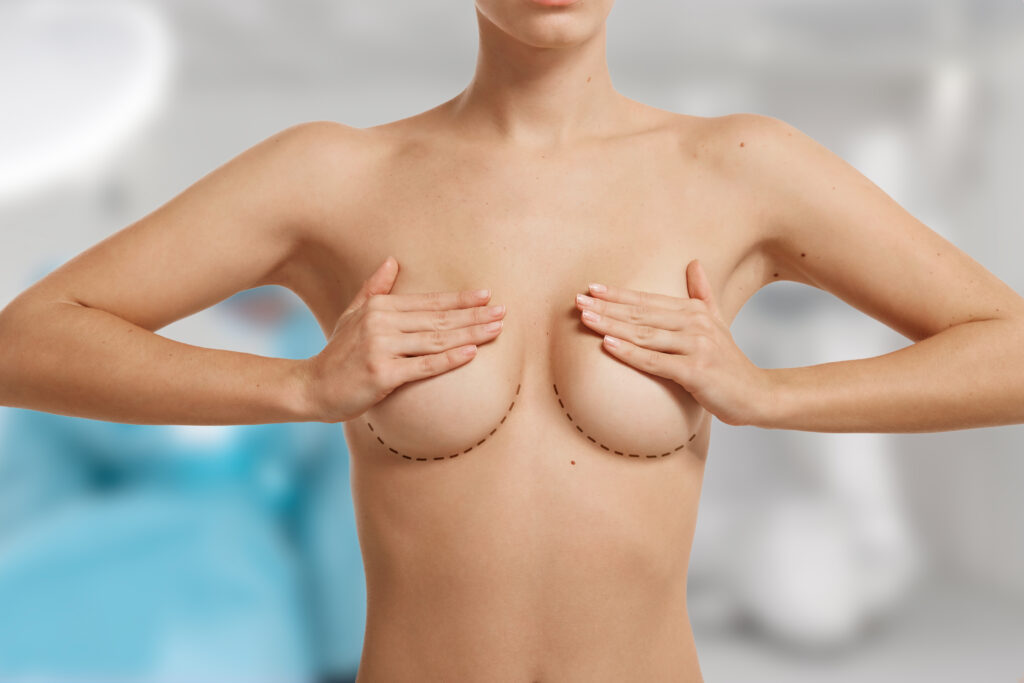The ear, or rather its external part (pinna), is a tricky place to work with due to its complex anatomy, sensitivity, and limited space for maneuvering. So if you’re planning an ear surgery, you need to make sure you’re going to a surgeon who knows what they’re doing.
We invited Dr. Rafael Zatz, a renowned ear plastic surgeon, to the interview, where he guided us on all aspects of what is otoplasty. He covered everything from surgical techniques to managing recovery and achieving the best results.
What is Otoplasty?
It would seem that this is such a simple and often invisible part of the body, but ears have always been and will always be an important element of a good appearance. Any visible flaw in them can attract unwanted attention from others, which affects our self-esteem and quality of life.
Otoplasty, commonly known as ear pinning, is a surgical procedure to address congenital or acquired ear deformities. In most cases, ear deformations, such as large, everted, or protruding ears, are inherited. Moreover, if one of the parents has such an anomaly, then according to the autosomal dominant principleAn inheritance pattern of certain traits or conditions, where having just one copy of the gene from either parent is enough to express the trait generations further., the child is likely to inherit an identical ear condition.
“Otoplasty is mistakenly classified as cosmetic surgery, but it is, in fact, a surgery to correct a deformity. And when you correct a congenital or an acquired deformity, you have this aesthetic benefit that improves the contour of the patient’s face, but this also often reflects on the patient’s self-esteem.”
— Dr. Zatz
As a rule, the auricle begins to deform in the course of its development. Even if ears seemed to look perfectly fine after birth, this does not exclude the possibility of changing their shape over time.
Cases When Otoplasty Is Needed

The most common reason for otoplasty is to address the cause of low self-esteem and cases of bullying based on ear deformity conditions. As Dr. Zatz puts it, “Patients often report a surge in self-confidence after recovery, better performance at work, and freedom from the fear of bullying. This impact is especially profound for children, who only begin to shape their self-image and persona.”
Individuals, especially children, may feel self-conscious about the shape or position of their ears and choose otoplasty as a way to achieve a more harmonious appearance that aligns with their self-image.
But in addition to working with hereditary ear defects, otoplasty is designed to eliminate more serious deformities of the ear, which are not only aesthetically pleasing but also physiologically dangerous.
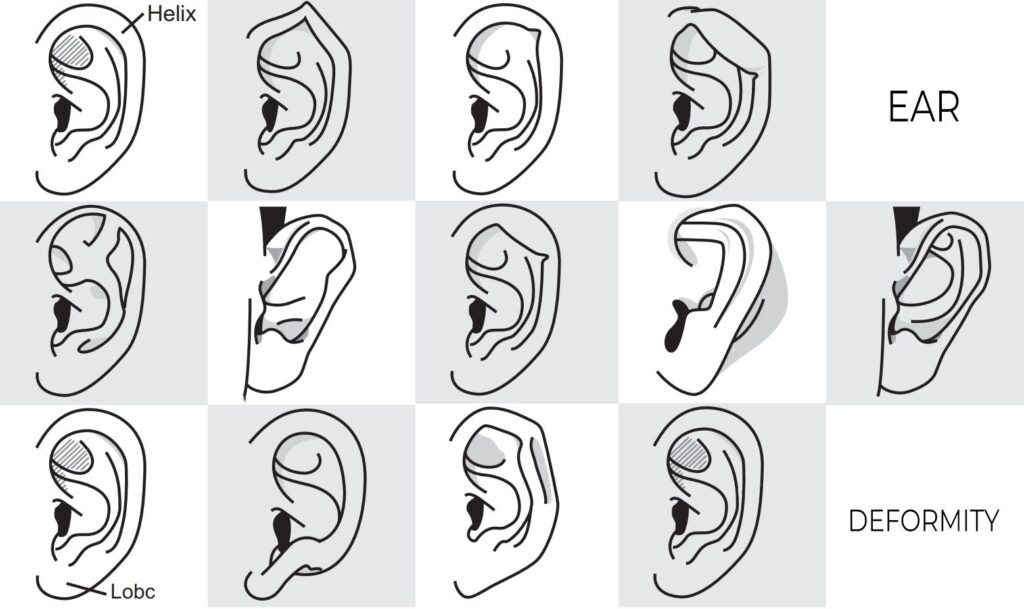
Among such cases are cryptotia, when the upper part of the auricle is hidden, or microtia, when the outer ear is underdeveloped. Even the so-called Stahl’s ear, which may seem “interesting” to some people at first glance, as they may resemble fantasy-like elven ears, also falls into this category.
To sum it up, there are three main otoplasty indications:
- Inherited ear deformations (protruding ears, asymmetry, etc.)
- Congenital ear abnormalities (microtia, anotia, cup ear, etc.)
- Post-traumatic acquired deformities (torn or stretched earlobe, burns, scalds, etc.)
Age Requirements
Typically, otoplasty can be performed starting from the age of 5-6, when the outer ear has reached its full developmental level. This is quite a convenient age, as it allows parents to take care of their child’s self-esteem in advance, even before they go to school, and become more conscious.
Some inherited ear concerns can be gently addressed non-surgically within the first 6 months if the parents don’t ignore the signs. With the help of special ear splints on the rim of the ears can help with molding the ear cartilage, potentially avoiding the need for surgery later [5].
However, there is no limit as such for performing surgery at an older age. As Dr. Zatz mentioned, his oldest patient was 70 years old.
Preparing for Otoplasty
Otoplasty is a surgical procedure that can be performed on an outpatient basis. This means that patients can undergo the procedure and leave on the same day. The surgery typically takes between 1.5 and 2 hours, excluding anesthesia preparation. In some cases, the procedure may take longer, but it usually takes no more than 4 hours.
The most important part of the preparation is the first and obligatory consultation with your surgeon. Fortunately, we live in a time when diagnostics and consultation can be carried out online or based on photographs. However, we still encourage you to visit a doctor yourself if you have the opportunity.
“Thanks to video consultations,” Dr. Zatz explains, “patients, even beyond Brazil, can access my expertise. Through photos and in-depth conversations, we can map out the entire process, including the right technique for the specific needs.”
The day before the procedure, it is advisable to wash your hair (we explain why so further), and wait for a confirmation call from the doctor. Otoplasty is best performed in the morning, the time depends on the working hours of the hospital itself, it can vary from 5:30 a.m. to 7:30 a.m.
Otoplasty Procedure Overview
This section describes the basic techniques of ear surgery for different types of deformities, as well as the process of work.
Types of Otoplasty Techniques
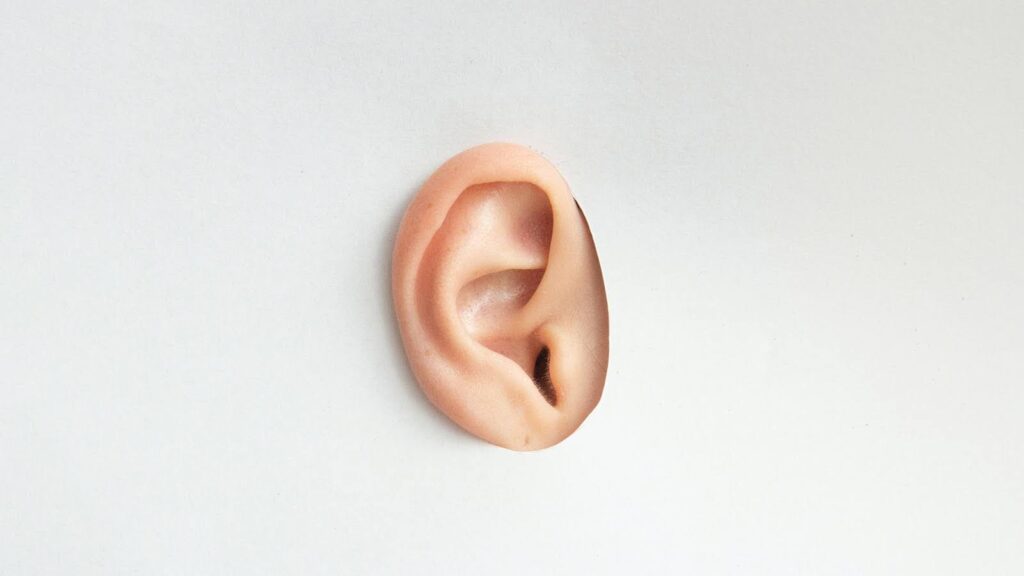
Ear surgery is very individualized, there is no certain recipe. Various techniques exist to achieve these goals, each with its advantages and limitations [4].
Mustardé Technique
The Mustardé technique is a traditional stitch method used in ear plastic surgery to address prominent ears. It involves reshaping the ear cartilage to create or enhance the natural fold (antihelical fold) and reduce any excessive prominence in the conchal bowl.

This technique effectively adjusts both the angle and projection of the ear, providing a balanced and natural appearance. It is commonly chosen by surgeons to correct protruding ears and restore harmony to the overall facial features.
Furnas Technique
This method involves repositioning the concha (outer bowl of the ear) without major cartilage resection or bending to correct issues like prominent or cupped ears. It’s less invasive compared to the Mustardé technique, and it has a shorter healing time [1]. However, it’s not suitable for severe deformities, plus there’s limited control over ear shape.

Stenström Technique
Stenström uses a cartilage-cutting technique to create the anti-helical fold. The key feature of this technique is its emphasis on preserving cartilage integrity while achieving aesthetically pleasing results. This approach aims to maintain the three-dimensional contours of the ear, providing a more harmonious appearance without compromising the structural support.

Chongchet Technique
The Chongchet technique involves creating an anti-helical fold by suturing the conchal and triangular cartilages together. However, it doesn’t involve resection of turbinate cartilage or cartilage weakening/bending.
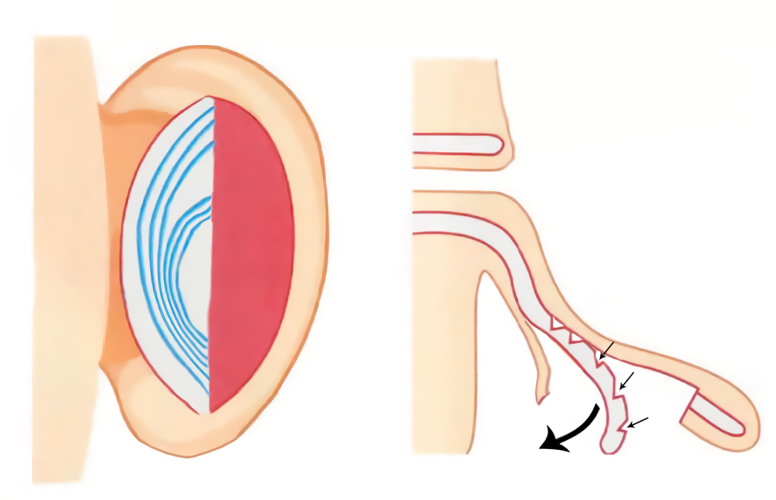
Otoplasty Process
The overall process of ear surgery has some similarities with all the techniques described above. Otoplasty can be performed with a sedative, but only if the patient is afraid of the process or needles.
Most often, it’s recommended to use local anesthesia for otoplasty [3]. The surgeon’s task is to make sure that his patient feels comfortable and relaxed throughout the process, with light background music and conversations.
“The biggest factor is motivation, if the person has a motivation, and they have an indication for surgery, the procedure will go well.”
— says Dr. Zatz
To reshape the cartilage of the ear, the surgeon cuts behind the ear, removes some cartilage, shapes it, and sews it back. They use special absorbable suture material that dissolves on their own and another type of stitch that should be removed after a week.
When the procedure is done, the ear is fixed with a bandage for several weeks to protect it while it heals. If there were no complications during the checks, the suture is removed after a week and then a bandage is only needed during sleep.
Otoplasty Results (Before and After)
Noticeable results of the operation will be visible after two weeks. During this time, swelling, bruising, and general condition will subside. However, the final result after complete healing, recovery, and adaptation by the body can be seen in the period of six months to a year after the operation.

The location of the stitch scar depends on the case, with the main goal being to place it behind the ear for better disguise. However, in some cases, a stitch may need to be positioned in front of the ear for a necessary contour change.
Otoplasty Risks and Contradictions
Surgical procedures on the ear demand a high level of skill, experience, and attention to detail from the surgeon. Due to the ear’s sensitivity, there is an inherent risk of complications such as infection, hematoma, recurrency, or changes in sensation.
According to Dr. Zatz, “With protruding ears, there is a possibility of recurrence even after a corrective procedure. Some stitches may come loose or there might be some trauma to the area, leading to the deformity reappearing. These may require touch-ups in the future.”
Otoplasty isn’t recommended for people with oncological conditions, heart problems, high blood pressure, thyroid issues, diabetes, and blood clotting problems. These conditions can make surgery riskier, so it’s best to consult about them with your surgeon beforehand.
Like any other surgery, ear pinning may have possible complications of otoplasty including bleeding, wound suppuration, epithelial maceration, and keloid scars.
However, due to preventive antibiotic therapy and the availability of high-quality suture material, aesthetic otoplasty does not provoke serious postoperative complications. But in the case of performing reconstructive otoplasty, there is a risk of necrosis and non-engraftment of the new auricle or its part.
Post-Op Otoplasty Aftercare Precautions

During the first week after surgery, the surgeon should be in daily contact with their patients to monitor the early recovery process and how they respond to prescribed medication.
Even though the process itself is quite quick and painless, you need to prepare for what will happen after the surgery. Your surgeon should explain the points described below to you during the consultation, but we have also analyzed the most important matters that you should prepare mentally before the operation as a reminder.
Sleeping Positions
The most difficult thing will be to get used to the ear band and the way you sleep during the first week. After the surgery, no weight should be placed on the ear, that is, you should not rest your head and sleep on your side, only sleeping upward or straight on the back.
To ease this process so you accidentally don’t turn your head while sleeping, use an orthopedic pillow, or add additional cushions on the sides as an alternative, like a U-shaped travel pillow. The point is to fixate your head without any pressure.

If back sleeping is uncomfortable, consider elevating the head with an extra pillow. This will help reduce swelling and minimize contact with the surgical site.
Shower Restrictions
We also advise you to take care of your shampooing schedule in advance and take a shower before the procedure, as you will not be able to wash your hair again until at least five days after the procedure.
Diet Restrictions
Fortunately, there are no dietary restrictions associated with this procedure. However, we advise you to give preference to softer foods to avoid vigorous or hard chewing in the first post-op days.
The ears can exhibit subtle movements while chewing because it involves the movement of the TMJTemporomandibular joint, a hinge-like joint between the jawbone and the skull. It plays a crucial role in the movement of the jaw, enabling actions like talking, chewing, and yawning., which is responsible for jaw movement. An excessive force or pressure during chewing could potentially impact the recently operated ears.
This precaution helps promote a smoother recovery process and reduces the risk of unintentional stress on the ear structures as they heal.
Physical Activity Restrictions
After otoplasty, it is generally advised to avoid strenuous physical activities to support the healing process. Engaging in vigorous exercise or activities that involve intense movement can increase blood flow and raise the risk of complications such as bleeding, swelling, or disruption of the ear’s newly shaped contours.
So, minimizing physical activities for the first 5–7 days will help to reduce stress on the surgical site, allowing the tissues to heal properly and minimizing the chances of adverse outcomes.
Sun Exposure and Glasses

In the first otoplasty post-op days, it is crucial to minimize sun and temperature exposure. Prolonged sun exposure can lead to increased sensitivity, redness, and potential complications like hyperpigmentation. Additionally, extreme temperatures, whether hot or cold, can impact the healing process and contribute to swelling or discomfort.
Also, those who wear glasses will need to give them up for a while and think about alternatives, as the glasses’ frames can affect the healing process. Heavy frames will put stress on the ear and potentially deform it, and there is a risk of infection unless you are going to disinfect your frames regularly.
How Much Does Otoplasty Cost?
The cost of otoplasty varies between $2,670–$4,100 (R$13,000–R$20,000), with an average cost of $3,962 (R$19,495 or €3613), according to the latest statistics from the American Society of Plastic Surgeons[2].
The price of surgery depends on many factors, starting with the degree of complexity of the procedure itself, the price of anesthesia, geographical factors, insurance availability, and postoperative costs.
Otoplasty Alternatives
Closed otoplasty (also named otomodeling) offers a promising alternative for individuals seeking subtle correction of ear prominence with minimal downtime and visible scars. The procedure typically takes around 30 minutes in an outpatient setting.
Unlike traditional ear plastic surgery techniques that involve incisions and sutures, otomodeling uses gentle pressure and molding techniques to reshape the ear cartilage gradually. This can involve special clips, splints, or absorbable sutures placed behind the ear to apply controlled pressure and guide the cartilage into the desired position.
However, this technique may be used only for protruding ears, and it doesn’t promise safe long-lasting results.
“The chances of recurrence of the complications we discussed are much higher than with conventional otoplasty. I’ve had patients who have had very serious complications from this procedure, such as loss of cartilage, and infection.”
— Dr. Zatz
Summary
Ear deformities can be a source of low self-esteem and provoke bullying, especially for children, and otoplasty is often performed to improve the overall balance and symmetry of the face.
Otoplasty is commonly sought for cosmetic reasons, but it can also be performed for functional reasons, such as correcting deformities or injuries to the ears.
In this article, with the help of Dr. Rafael Zatz’s advice, we analyze all possible aspects of the ear surgery procedure as deeply as possible, discussing indications, risks, and important postoperative factors.
FAQ
👂 What Is Otoplasty Surgery?
Otoplasty surgery is a type of cosmetic surgery that aims to change the size, shape, or position of the ears. This procedure is typically performed to address various ear deformities, which can improve appearance and self-confidence.
💳 How Much Does Otoplasty Cost?
The cost of otoplasty varies depending on several factors such as the surgeon’s experience, the complexity of the procedure, and the geographical location. On average, the cost of the procedure ranges from $2,670 to $4,100 (R$13,000–R$20,000).
👶 What Is the Best Age To Have Ear Surgery?
The optimal age for otoplasty is around 5 to 6 years old because, at this age, the ear cartilage is more pliable, and the child can better understand and follow the postoperative care instructions. However, adults can also benefit from the procedure.
⚠️ What Are the Risks of Otoplasty Surgery?
Like any surgery, otoplasty does carry some risks, including infection, bleeding, changes in sensation, scarring, and dissatisfaction with the cosmetic outcome.
References
- Alencar EC, Lucena JRS, Carvalho Filho RAS, Oliveira KPF, Almeida CLA. Surgical correction of prominent ears: association of the Furnas and Mustardé techniques. Rev. Bras. Cir. Plást.2015;30(3):439-445
- American Society of Plastic Surgeons. (2022). ASPS Procedural Statistics Release. https://www.plasticsurgery.org/documents/News/Statistics/2022/plastic-surgery-statistics-report-2022.pdf
- Santos, F. Z. F., Avellan, L., Freitas, D. I. B. V., Casali, T. G., Fleury, D. P. C., Squarisi, J. M. O., et al. (2013). Comparison between otoplasty performed under local anesthesia with and without sedation. Revista Brasileira de Cirurgia Plástica, 28(4), 578-581.
- Thorne C. Chung K. C. Gosain A. Guntner G. C. & Mehrara B. J. (2014). Grabb and Smith’s plastic surgery (Seventh). Wolters Kluwer/Lippincott Williams & Wilkins Health.
- Woo, J. E., Park, Y., Park, E. J., Park, K. Y., Kim, S. H., & Yim, S. (2017). Effectiveness of ear splint therapy for ear deformities. Annals of Rehabilitation Medicine, 41(1), 138. https://doi.org/10.5535/arm.2017.41.1.138

